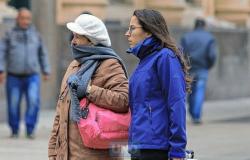Perhaps many people do not take this possibility into account, but the earth can shake in any part of the Cuban archipelago, and this condition requires that citizens and decision-makers have a greater perception of seismic risk to reduce vulnerabilities and know how to act in the event of an earthquake. .
Doctor in Earth Sciences, Enrique Arango Arias, head of the National Seismological Service and technical vice director of the National Center for Seismological Research (Cenais), explained to Granma that the area of the country most exposed to suffering an earthquake is located in the southeastern portion. , linked to the Oriente fault system (Bartlett-Caiman).
«Historically, the strongest events have occurred there, but the chronology corresponding to the period from 1528 to the present records earthquakes throughout the entire Cuban geography, some very notable. Such is the case reported in the town of San Cristóbal, today the province of Artemisa, on January 23, 1880,” he stated.
According to Dr. Arango Arias, it reached an estimated magnitude of 6.0, caused considerable material damage and was noticeable in areas of Havana, to the surprise of its inhabitants, not accustomed to the movement of the earth.
Among the significant earthquakes that occurred outside eastern Cuba are the one in Remedios-Caibarién, on August 15, 1939, with a magnitude of 5.6, and those in Alonso de Rojas, Pinar del Río, on June 11, 1981, and Jaguey Grande, Matanzas, on December 16, 1982, which caused cracks in the walls of several schools.
More recently, on June 29, 2021, there was a 5.1 magnitude earthquake, again in San Cristóbal, which produced more than 700 aftershocks.
But if we talk about large telluric events, it is impossible not to mention the one that occurred on August 20, 1852 in Santiago de Cuba, whose estimated magnitude reached 7.3.
Press reports from the time report the demolition of more than a thousand homes, while there was considerable damage to churches and buildings. It also caused large rock slides in the vicinity of the Sierra Maestra, along with the appearance of wide cracks in the ground.
Also notable is the incident recorded on February 3, 1932, in the city of Santiago itself, which totally or partially destroyed 80% of the buildings, in addition to causing some 300 wounded and injured, and nearly 20 fatalities.
For the Technical Vice Director of Cenais, it is extremely important to maintain the perception of risk, since the probability of a strong earthquake occurring there is high, taking into account that 92 years have passed since that last event, and we are fully immersed in the period. return or recurrence.
«The above is also valid for those localities in the rest of the national territory that in past times suffered the impacts of some earthquake of interest; hence the rush to reduce vulnerability and avoid the construction of buildings that do not comply with the Cuban standard for earthquake-resistant constructions,” he said.
SCIENCE IN CLOSEUP
Under the leadership of Cenais, in the last two decades there has been a considerable increase in fundamental and applied research, which has strengthened the knowledge of seismic activity, mainly in the highest danger areas.
Doctor in Technical Sciences Grisel Morejón Blanco, deputy scientific director of Cenais, told Granma that, to reduce seismic risk, it is necessary to lower the level of vulnerability and strengthen the structural reinforcement of new buildings and other facilities of socioeconomic importance, which are edify
“This requires using modern technologies that mitigate the impact of earthquakes and lower the cost of the investment process, in addition to establishing control mechanisms capable of ensuring the mandatory use of the established earthquake-resistant standard.”
As Dr. Morejón Blanco emphasized, the first step aimed at guaranteeing seismic safety in buildings is to have an updated standard, based on the new results provided by scientific studies in the field of seismology and geology.
«The first applied in Cuba dates back to 1984 (before that date, that type of design was based on those from the former Soviet Union), which was replaced by Cuban Standard 46:1999, put into force in that same year. », he stated.
Today, he pointed out, NC 46:2017, approved in 2017, is in force, but it does not consider all the technical elements necessary to guarantee the adequate design of buildings in our country.
Likewise, it uses coefficients taken from foreign regulations and does not contain key requirements in the rehabilitation of structures, nor does it regulate the criteria for the earthquake-resistant design of bridges, he stated.
Based on the recent knowledge provided by the studies developed at Cenais, referring to the behavior of seismic activity in the area of Cuba and its surroundings, the engineer conceived a proposal aimed at updating NC 46:2017.
The document, he pointed out, is based on the new seismic zoning of Cuba, whose maps constitute the basis of the earthquake-resistant design codes for buildings and summarizes years of research, linked to estimating the level of danger in each specific section of the Cuban archipelago.
«It also takes into account the characterization of construction materials based on destructive and non-destructive tests, introduces the updated requirements for the design of conventional reinforced in situ or prefabricated concrete and steel bridges, as well as the dynamic response of the constructive structure, through instrumental measurements and the comprehensive evaluation of its vulnerability,” he explained.
Likewise, the proposal is based on the complete information from the catalog of earthquakes that have occurred in Cuba from 1502 to date, and contemplates the application of a computer program that models the behavior of 22 active seismic faults, among other scientific tools, the doctor stressed. Morejón Blanco.






